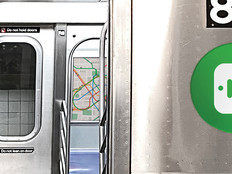Virtual Care Improvements from AI
Clinicians are beginning to use generative AI to collect data from patients before conducting a virtual visit. In addition, AI can alert providers to changes in a patient’s health when connected to remote patient monitoring (RPM) devices.
Chatbots can perform triage and assist providers by interacting with patients prior to a virtual session.
“If you're going to be in a virtual care environment where your experience doesn't start with a doctor popping up on your computer immediately, it can start with a chatbot asking you some questions,” says Dr. Ronald M. Razmi, cofounder and managing director at Zoi Capital as well as the author of AI Doctor: The Rise of Artificial Intelligence in Healthcare. “Based on your responses, a chatbot can decide what kind of care you are going to need. If it is more intelligent, it can be trusted to provide good guidance. It can accelerate the process.”
DIVE DEEPER: Healthcare chatbots are expanding automated medical care.
Assisted Administrative Workflows with Generative AI
Generative AI can assist with coding for diagnoses in addition to drafting referrals, prior authorization letters and claim submissions. It can also generate letters to insurance companies outlining next steps for patient care, according to Razmi.
Telehealth visits require coding and documentation, and generative AI can assist healthcare providers with these tasks.
“It could look at the notes generated and automatically do the coding that needs to be done to charge for that encounter,” Razmi explains.
With AI tools documenting virtual care encounters, physicians can spend less time typing during or after a visit. If generative AI makes a mistake in coding or documentation related to a virtual care session, physicians reviewing the notes can catch it without harming patients, Razmi explains.
“That note doesn't get saved into the patient's chart until the clinician reviews the note and signs off on it,” he says.
AI eases administrative workflows prior to a virtual care session by eliminating the need for patients to fill out PDF questionnaires and intake forms, according to Elliott. It also can correct inaccurate insurance and pharmacy info in real time to reduce clinical care delays.
“Without AI, we have to rely on PDFs, uploads, e-faxes, or worse, telephonic intake, which is often a barrier to delivering seamless virtual care,” Elliott says.











